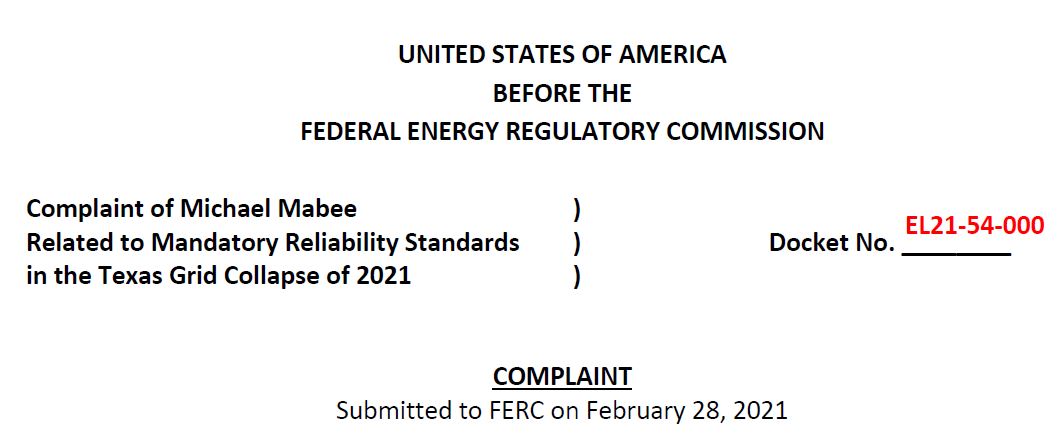Federal Complaint Filed on Texas Grid Collapse
Texas Grid Collapse Complaint:
For PDF Copy Click Here
Introduction
I am a private citizen who conducts public interest research on the security of the electric grid because I recognize the absolutely vital role of this infrastructure in powering every one of the nation’s 16 critical infrastructures and in undergirding not just the well-being but the very survival of our modern society. I am also a resident of Texas and was adversely impacted by the February 15, 2021 Texas grid collapse.
I am filing this complaint under 16 U.S. Code § 824o(d)(5)[1] and 16 U.S. Code § 824o(e)(3)[2] because, the Texas blackout on February 15, 2021 demonstrates that either:
- The mandatory reliability standards were not followed, or,
- The mandatory reliability standards were ineffective.
Request for Investigation
I request that the Commission issue a public notice of this Complaint pursuant to 18 CFR § 385.206(d), investigate this Complaint and issue an appropriate order to the Electric Reliability Organization (“ERO”) to correct deficiencies.
Background of Texas Grid Collapse of 2021
On February 11, 2021, the Electric Reliability Council of Texas (ERCOT) issued a press release warning that “Extreme cold weather expected to result in record electric use in ERCOT region.”[3] (This press release is attached as Exhibit A.) The press release advised:
“This statewide weather system is expected to bring Texas the coldest weather we’ve experienced in decades,” said ERCOT President and CEO Bill Magness. “With temperatures rapidly declining, we are already seeing high electric use and anticipating record-breaking demand in the ERCOT region.”
On February 14, 2021, ERCOT issued another press release: “Grid operator requests energy conservation for system reliability.”[4] (This press release is attached as Exhibit B.) The press release advised:
“We are experiencing record-breaking electric demand due to the extreme cold temperatures that have gripped Texas,” said ERCOT President and CEO Bill Magness. “At the same time, we are dealing with higher-than-normal generation outages due to frozen wind turbines and limited natural gas supplies available to generating units. We are asking Texans to take some simple, safe steps to lower their energy use during this time.”
On February 15, 2021, ERCOT issued a third press release: “ERCOT calls for rotating outages as extreme winter weather forces generating units offline – Almost 10,000 MW of generation lost due to sub-freezing conditions.”[5] (This press release is attached as Exhibit C.) The press release, in its entirety, advised:
AUSTIN, TX, Feb. 15, 2021 – The Electric Reliability Council of Texas (ERCOT) entered emergency conditions and initiated rotating outages at 1:25 a.m. today.
About 10,500 MW of customer load was shed at the highest point. This is enough power to serve approximately two million homes.
Extreme weather conditions caused many generating units – across fuel types – to trip offline and become unavailable.
There is now over 30,000 MW of generation forced off the system.
“Every grid operator and every electric company is fighting to restore power right now,” said ERCOT President and CEO Bill Magness.
Rotating outages will likely last throughout the morning and could be initiated until this weather emergency ends.
Impact on the People of Texas
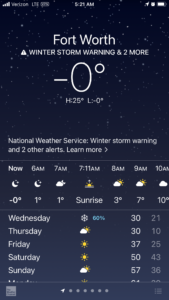 The reality on the ground in Texas was a little less sterile than “10,500 MW of customer load was shed.”[6]
The reality on the ground in Texas was a little less sterile than “10,500 MW of customer load was shed.”[6]
People died. Critical infrastructures were impacted.
Over 4,000,000 customers lost power during two days of subfreezing temperatures. Many lost power for longer. The picture on the right is the temperature at 5:21 a.m. on February 16, 2021 when many of us in Texas had already been without power for over 24 hours. The Houston Chronicle reported[7] that day that:
Harris County has seen more than 300 carbon monoxide poisoning cases as temperatures bottomed out Monday in Houston and the state’s electricity grid failed, sending people scrambling for heat sources. That includes 90 carbon monoxide poisoning calls to the Houston Fire Department and 100 cases in Memorial Hermann’s emergency rooms.
Desperate people, who depended on the electric grid, tried any means they could find to keep their families from freezing – sometimes with catastrophic results. According to the article:
Several people have already died seeking warmth. A woman and an 8-year-old girl died from suspected carbon monoxide poisoning in Sharpstown, while a man and a 7-year-old boy were taken to a nearby hospital in critical condition. Three children and their grandmother died in a Sugar Land house fire after using the fireplace to heat their home.
The Wall Street Journal reported on February 23, 2021 that “Officials are still counting fatalities from hypothermia, carbon monoxide, other factors as some experts warn accurate total might never be known.”[8] The article reported:
The failure of the state’s electrical grid during the weeklong cold snap left more than four million Texans without electricity and heat, many for days on end in subfreezing temperatures. Many residents also lost access to water, and 14.6 million were ordered to boil water to make it safe to drink.
…
An 11-year-old boy was found frozen in his bed, his family told the Houston Chronicle. A grandmother and three grandchildren died in a house fire as they were trying to stay warm, the Chronicle also reported. At least six deaths occurred near the Abilene area, local media reported, including a patient who couldn’t get medical treatment due to a lack of water and three elderly men who were found dead in subfreezing homes.
A copy of this Wall Street Journal article is attached as Exhibit D.
Impact on Texas Critical Infrastructures
Presidential Policy Directive 21 (PPD-21) “Critical Infrastructure Security and Resilience”[9] identifies the 16 critical infrastructures in the U.S. and mandates that:
The Federal Government shall work with critical infrastructure owners and operators and SLTT [state, local, tribal, and territorial] entities to take proactive steps to manage risk and strengthen the security and resilience of the Nation’s critical infrastructure, considering all hazards that could have a debilitating impact on national security, economic stability, public health and safety, or any combination thereof.
The Texas grid collapse beginning on February 15, 2021 adversely impacted critical infrastructures. Many people may have never heard of PPD-21, but this is what the failure of the critical infrastructures looks like to the people with no power trying to survive in subfreezing temperatures:
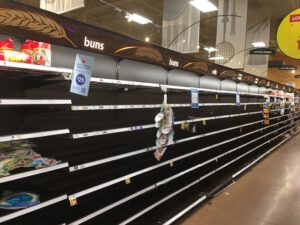

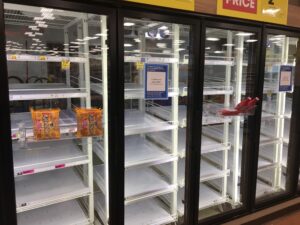
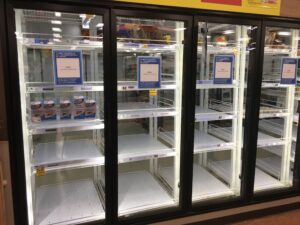
Here is another example of what critical infrastructure impact looks like to the actual people suffering through it:
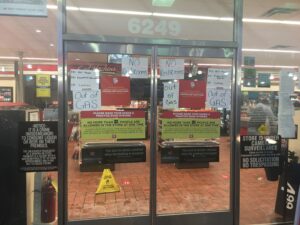
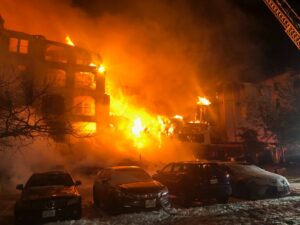 In addition to the food, agriculture and transportation sectors, the collapse of the water infrastructure has been well covered in press articles.[10] Millions in Texas were under “boil water” orders as the water infrastructure was impacted by the collapse of the grid and many had no water at all. Firefighters watched helplessly as homes burned and they lacked the water to fight the fires.[11]
In addition to the food, agriculture and transportation sectors, the collapse of the water infrastructure has been well covered in press articles.[10] Millions in Texas were under “boil water” orders as the water infrastructure was impacted by the collapse of the grid and many had no water at all. Firefighters watched helplessly as homes burned and they lacked the water to fight the fires.[11]
Some people froze in their homes and those that survived struggled for food and water when the critical infrastructures collapsed along with the Texas electric grid.
This is what the failure of electric reliability standards looks like. People dead, homes destroyed, critical infrastructures failing and the economy severely impacted. [12] (Photo credit: Bexar-Bulverde Volunteer Fire Department.)
Lessons Learned from 2011 and 1989 Texas Blackouts Ignored
In 2021 we find, as Yogi Berra once said, “It’s déjà vu all over again.” Almost exactly 11 years prior to the collapse of the Texas grid in February of 2021, a very similar thing happened in February 2011. And before that, another similar blackout occurred in December of 1989. While the causes of the 2021 Texas grid collapse are still under investigation, many similarities between the three tragic incidents are apparent.
The Austin American-Statesman reported[13] on February 18, 2021:
Failing power plants, rolling blackouts and a spike in demand as Texas is hijacked by a harsh February winter snowstorm – this was the scenario exactly a decade ago as blackouts rolled through Texas.
A post-mortem at the time – including a key finding that state officials recommended but did not mandate winter protections for generating facilities – has renewed relevance as Texas is roiled by a record storm that has left millions without power for at least three days amid plunging temperatures.
A combination of those 2011 findings, as well as reports from the state grid operators that generators and natural gas pipelines froze during the current calamity and Austin American-Statesman interviews with current and former utility executives and energy experts, suggest a light regulatory touch and cavalier operator approach involving winter protections of key industrial assets.
(Emphasis added.)
While it appears that a lot of lessons were learned from the 2011 Texas blackout. it also appears that few steps were taken to harden the Texas grid against a similar event in the future (i.e., the 2021 Texas blackout).
According to an August 2011 Joint report of the Federal Energy Regulatory Commission (FERC) and the North American Electric Reliability Corporation (NERC)[14]:
Between February 1 and February 4, a total of 210 individual generating units within the footprint of the Electric Reliability Council of Texas, Inc. (ERCOT), which covers most of Texas, experienced either an outage, a derate, or a failure to start. The loss of generation was severe enough on February 2 to trigger a controlled load shed of 4000 MW, which affected some 3.2 million customers. On February 3, local transmission constraints coupled with the loss of local generation triggered load shedding for another 180,000 customers in the Rio Grande Valley in south Texas.
(A copy of this report is attached as Exhibit E.) It is important to note, that prior to the 2011 Texas blackout, there had been another blackout in 1989 which bears striking similarities to 2011 and 2021. The Joint FERC/NERC report noted:
The experiences of 1989 are instructive, particularly on the electric side. In that year, as in 2011, cold weather caused many generators to trip, derate, or fail to start. The PUCT investigated the occurrence and issued a number of recommendations aimed at improving winterization on the part of the generators. These recommendations were not mandatory, and over the course of time implementation lapsed. Many of the generators that experienced outages in 1989 failed again in 2011.[15]
Benjamin Disraeli famously said: “What we learn from history is that we do not learn from history.” In the present context, the people of Texas have suffered blackouts in 1989, 2011 and 2021 – all bearing remarkable – and preventable similarities. All having at least something to do with the lack of winterization of equipment and ill-preparedness for extreme cold weather.
In 2011, the regulators were comparing the 2011 blackout to 1989. On April 11, 2011, The Austin American Statesman reported[16]:
The report from the Public Utility Commission of Texas is clear in its analysis of what went wrong:
“The winter freeze greatly strained the ability of the Texas electric utilities to provide reliable power to their customers. Record and near-record low temperatures were felt throughout the state resulting in a significantly increased demand for electrical power.
“At the same time that demand was increasing, weather-related equipment malfunctions were causing generating units to trip off the line.” As a result, it noted, the state suffered widespread rolling blackouts and “near loss of the entire ERCOT electric grid.”
ERCOT is still the Electric Reliability Council of Texas. But the PUC report wasn’t analyzing the power outages that hit a large swath of Texas when temperatures plunged this past February. The report is dated November 1990 and is referring to the record freeze of late December 1989.
The PUC has a single remaining copy of it in its library north of the Capitol.
The report referred to in the article is Public Utility Commission of Texas report: “Electric Utility Response to the Winter Freeze of December 21 to December 23, 1989.”[17] (A copy of this report is attached as Exhibit F.)
The 2011 blackout caused a flurry of investigations, hearings, reports and public outrage. Multiple Hearings, Investigations, Reports — and ultimately inaction.
On February 26, 2021 the Houston Chronicle reported[18]:
A decade ago, after an Arctic cold spell knocked out power and left millions of Texans shivering in the dark, the Public Utility Commission’s enforcement apparatus swung into action. Their aim: punish the companies that had promised but failed to deliver electricity in an emergency.
Specialists contracted by the state agency worked with an enforcement team the utility commission created four years earlier. More recently, it had added lawyers whose only job was to pursue wrong-doing. The energy companies eventually paid fines and settlements totaling hundreds of thousands of dollars for failing to prepare for the extreme weather.
Two weeks ago, history repeated. Millions of residents were left without power and water in below-freezing temperatures. The damage far exceeded the 2011 storm. Nearly a third of the grid’s power plants went offline. Dozens of deaths have been attributed to the event, with a full accounting yet to come.
But the enforcement tools that worked to hold companies accountable for the 2011 failures had been removed under Gov. Greg Abbott’s appointees on the utility commission. Hearst Newspapers reported last week that commissioners in November cut ties with the Texas Reliability Entity — the specialists hired — leaving state regulators without an external independent reliability monitor.
Four months before that, the governor’s commissioners had also disbanded the Oversight & Enforcement Division. The head attorney was told he no longer had a job; nine other team members were reassigned throughout the utility commission.
Several pending cases were dropped. According to commission records, by the end of 2020 the number of enforcement cases had fallen 40 percent.
The 2011 Joint FERC/NERC report noted:
On February 14, the Federal Energy Regulatory Commission (FERC) initiated an inquiry into the Southwest outages and service disruptions. The inquiry had two objectives: to identify the causes of the disruptions, and to identify any appropriate actions for preventing a recurrence of the disruptions. FERC stated it was not at that time initiating an investigation into whether there may have been violations of applicable regulations, requirements or standards under FERC’s jurisdiction, and that any decisions on whether to initiate enforcement investigations would be made later. Consequently, while this report describes actions which in some cases appear to warrant further investigation, it does not reach any conclusions as to whether violations have occurred.
It seems nobody wants to tell the industry to fix grid security issues in Texas, thus they do not get fixed. This regulatory inaction is causing deaths, impacts to the critical infrastructures, and economic loss — it is unacceptable.
The 2011 Texas blackout was followed by many promises but little action. The Electric Reliability Council of Texas (ERCOT) made many promises, including “ERCOT will be an active participant in the discussion related to the adequate weatherization of generation units.”[19]
In 2021, It doesn’t seem that this “discussion” was fruitful.
One of the Key Findings in the FERC and NERC Joint 2011 report was:
During the February event, temperatures were considerably lower (15 degrees plus) than average winter temperatures, and represented the longest sustained cold spell in 25 years. Steady winds also accelerated equipment heat loss. However, such a cold spell was not unprecedented. The Southwest also experienced temperatures considerably below average, accompanied by generation outages, in December 1989. Less extreme cold weather events occurred in 2003 and 2010. Many generators failed to adequately apply and institutionalize knowledge and recommendations from previous severe winter weather events, especially as to winterization of generation and plant auxiliary equipment.
(Emphasis added.)
Recommendations related to extreme cold weather and winterization in the FERC and NERC Joint 2011 report have apparently not been heeded. Similar recommendations of the Public Utility Commission of Texas after the 1989 Texas blackout were also not heeded.
The Foundation for Resilient Societies has done a preliminary analysis on the costs of the 2021 blackout versus the cost of mitigation.[20] These data demonstrate that it would have cost substantially less to mitigate the 2021 disaster than the disaster has actually cost us. To paraphrase the old adage, “an ounce of prevention is cheaper than a pound of disaster.” And yet we continue in this cycle of inaction and disaster. 1989. 2011. 2021.
Somebody is going to have to pay for this disaster. The taxpayers or the ratepayers. Unfortunately, I am both so I will pay. But perhaps I shouldn’t complain. Many people have paid for these disasters in 1989, 2011 and 2021 with their lives.
I implore the Commission: Stop asking and recommending. It is time to direct NERC and Texas RE to take action. Violators of reliability standards must be held accountable and we must make sure that this cycle of blackouts, deaths, critical infrastructure impacts and damage to the economy stops.
If we were not prepared for a known incoming weather event, are we prepared for other events?
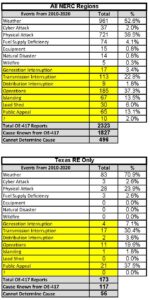
I conducted an analysis of the reported electric disturbance events between 2010 and 2020 from the Department of Energy OE-417 Electric Disturbance Reports.[21] (I have attached a copy of my analysis as Exhibit G.)
According to my analysis, 52.6% of OE-417 disturbance reports filed nationwide in the last decade are weather related.
Interestingly, 70.9% of the disturbances reported in the Texas RE region are weather related. The Commission needs to ask why this difference exists and whether mandatory reliability standards are either being followed or are effective.
If we are not adequately prepared for a weather event that is forecast well in advance, such as the 2021 Texas grid collapse, are we ready for other threats?
Mike Rogers, former chairman of the House Intelligence Committee, recently noted in an article entitled “Why America would not survive a real first strike cyberattack today”[22]:
The only thing that prevented the Russians from launching a destructive malware attack or inserting malicious code was the Russians themselves. They could have caused a major disruption across our government and private sector networks, changing or deleting data, planting viruses, or simply turning off the networks. Restarting the systems and deleting the offending code alone is not a solution. In 2016, the Ukrainian electricity grid was targeted by the Russians and, until this day, the country is still finding and removing vulnerabilities left behind by Moscow.
If we are unable to prepare our electric grid and its dependent critical infrastructures from a cold snap that we see coming over a week away, it begs the question: Are we prepared for a cyberattack?[23] Are we prepared for a coordinated physical attack?[24] Are we prepared for a major geomagnetic disturbance (GMD) event? Are we prepared for an electromagnetic pulse (EMP) attack? Are we prepared for other extreme weather events?
Relief Sought
- The Federal Energy Regulatory Commission should direct the North American Electric Reliability Corporation (NERC) and its regional entity, Texas Reliability Entity, Inc. (Texas RE) to conduct a comprehensive investigation into whether reliability standards were followed by all entities registered with Texas RE who had any involvement in the Texas grid collapse of February 15, 2021.
- If the North American Electric Reliability Corporation (NERC) and its regional entity, Texas Reliability Entity, Inc. (Texas RE) determine that violations of reliability standards did not contribute to the Texas grid collapse of February 15, 2021, then the Federal Energy Regulatory Commission should direct the North American Electric Reliability Corporation (NERC) to improve the reliability standards to prevent catastrophic power outages such as this from occurring in the future.
Respectfully submitted,
Michael Mabee
Attachments:
- 18 CFR § 385.206 Compliance Information
- Draft Notice
- Exhibits A-G
Footnotes – Texas Grid Collapse Complaint:
[1] “The Commission, upon its own motion or upon complaint, may order the Electric Reliability Organization to submit to the Commission a proposed reliability standard or a modification to a reliability standard that addresses a specific matter if the Commission considers such a new or modified reliability standard appropriate to carry out this section.” [Emphasis added.]
[2] “On its own motion or upon complaint, the Commission may order compliance with a reliability standard and may impose a penalty against a user or owner or operator of the bulk-power system if the Commission finds, after notice and opportunity for a hearing, that the user or owner or operator of the bulk-power system has engaged or is about to engage in any acts or practices that constitute or will constitute a violation of a reliability standard.” [Emphasis added.]
[3] Available at: http://www.ercot.com/news/releases/show/224996
[4] Available at: http://www.ercot.com/news/releases/show/225151
[5] Available at: http://www.ercot.com/news/releases/show/225210
[6] In fact, Mr. Magness later testified to the Texas State Legislature that 20,000 MW was shed.
[7] Houston Chronicle. “Harris County is slammed with 300+ carbon monoxide cases – and many are kids.” March 16, 2021. Available at: https://www.houstonchronicle.com/news/houston-texas/health/article/Memorial-Hermann-sees-60-carbon-monoxide-15954216.php
[8] Wall Street Journal. “Full Death Toll From Texas Storm Could Take Months to Determine.” February 23, 2021. Available at: https://www.wsj.com/articles/full-death-toll-from-texas-storm-could-take-months-to-determine-11614107708
[9] Available at: https://fas.org/irp/offdocs/ppd/ppd-21.pdf
[10] NBC News. “Texas water shortage adds to power crisis as new winter storm moves in.” February 17, 2021. https://www.nbcnews.com/news/us-news/texas-contending-water-nightmare-top-power-crisis-n1258208
[11] New York Times. “A Texas apartment building burned while firefighters scrambled for water.” February 19, 2021 https://www.nytimes.com/2021/02/19/us/san-antonio-fire-hydrants-water.html
[12] Foundation for Resilient Societies. “Causes and Costs of ERCOT Load Sheds in February 2021.” February 24, 2021 (Preliminary). https://www.resilientsocieties.org/uploads/5/4/0/0/54008795/ercot_load_shed_causes_and_costs_preliminary_feb_25_2021.pdf
[13] Austin American-Statesman / USA Today. “Winter storm blackouts plagued Texas in 2011, too. Recommendations made afterward went unenforced.” February 18, 2021. https://www.usatoday.com/story/news/nation/2021/02/18/state-energy-winter-protections-lacking-reports-have-suggested/4490501001/
[14] Federal Energy Regulatory Commission and the North American Electric Reliability Corporation. “Report on Outages and Curtailments During the Southwest Cold Weather Event of February 1-5, 2011.” August 2011. https://www.ferc.gov/sites/default/files/2020-05/ReportontheSouthwestColdWeatherEventfromFebruary2011Report.pdf
[15] id. Page 10.
[16] Austin American Statesman. “February power blackouts across Texas echoed 1989 failures, state report shows.” April 11, 2011. https://www.statesman.com/article/20110411/NEWS/304119704
[17] Available at: https://lrl.texas.gov/scanned/archive/1990/15303.pdf
[18] Houston Chronicle. “’Muzzled and eviscerated’: Critics say Abbott appointees gutted enforcement of Texas grid rules.” February 26, 2021. https://www.houstonchronicle.com/politics/texas/article/critics-abbott-power-grid-rules-texas-deadly-storm-15982421.php
[19] ERCOT “Review of February 2, 2011 Energy Emergency Alert (EEA) Event.” February 14, 2011. http://www.ercot.com/content/meetings/board/keydocs/2011/0214/Review_of_February_2,_2011_EEA_Event.pdf
[20] Foundation for Resilient Societies. “Causes and Costs of ERCOT Load Sheds in February 2021.” February 24, 2021 (Preliminary). https://www.resilientsocieties.org/uploads/5/4/0/0/54008795/ercot_load_shed_causes_and_costs_preliminary_feb_25_2021.pdf
[21] See: https://securethegrid.com/oe-417-database/
[22]Rogers, Mike. “Why America would not survive a real first strike cyberattack today.” February 22, 2021. https://thehill.com/opinion/cybersecurity/539826-we-would-not-survive-true-first-strike-cyberattack?rl=1
[23] The Commission dismissed my complaint about inadequate supply chain cyber security CIP standards on October 2, 2020. Docket Number EL20-46-000.
[24] The Commission dismissed my complaint about inadequate physical security CIP standards on June 9, 2020. Docket Number EL20-21-000.
- Texas Grid Collapse Complaint: Click HERE For PDF Copy With Exhibits
- FERC Notice of Complaint EL21-54-000
- Federal Register Notice of Complaint in EL21-54-000
- Motion for FERC to take Official Notice of March 5, 2021 GAO Report
- Motion for FERC to take Official Notice of March 25, 2021 DSHS Data
You can be heard. Find out what you can do here:
TAKE ACTION!
[wpedon id=”5868″ align=”center”]

